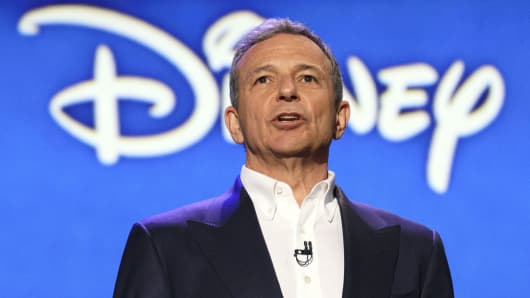Disney's stock dropped almost 5% Thursday after its CEO, Bob Iger, spoke at the Bank of America Merrill Lynch media conference in Beverly Hills and revealed that this year's earnings will be roughly equal last year's. That's about 15% lower than what Wall Street analysts expected which implies disappointing results in the current quarter.
For the last two years, Disney has seen its stock price struggle. It dropped from $120/share to $91, rebounded to $116, and as of Friday morning is below $100 again after Thursday's comments.
The primary reason for the stock's struggle is that Disney is shedding Cable Networks customers slowly which is the most profitable part of the entire company — accounting for about half its profits.
The two questions for investors for the last two years have been:
- How quickly will the cable subscribers keep dropping, and
- Where will that decline bottom out?
The problem for Disney management is that those questions are backward-looking at the declining part of their business. Even though Disney has begun to more forcefully sketch out their new growth initiatives — like their inclusion in skinny bundles, a new ESPN Over The Top (OTT) service launching next spring, and a Disney-specific OTT service (including Disney, Pixar, Marvel, and Lucasfilm movies) — those new businesses aren't much bigger than their existing declining old businesses.
In other words, the new "growth" parts of Disney aren't growing quickly enough to compensate for the declining parts of the old "mature" parts of Disney.
The growth parts of Disney don't have to be wildly profitable immediately to make investors feel better. Look at how public market investors have patiently waited for the Amazon and Netflix stories to play out, while still rewarding them with rich stock prices. Investors did so because they could see a winning long-term strategy with a big addressable market in which both Amazon and Netflix could start raising prices over time.
Investors bought into the story. Not a PR-created story with buzzwords and no connection to reality. They bought into a credible long-term story where each company had a big moat, strong momentum, and a large total addressable market.
The conclusion drawn was simple: These companies are going to be a lot bigger a few years than they are today.
Disney has big advantages compared to most media companies. They are arguably the best story-tellers in the world. They extend existing beloved blockbusters like Star Wars, Toy Story, and Cars, while developing new blockbusters like Frozen. They have the top sports channel in the world in ESPN with rights to the most-watched sports locked up for the next several years. They are also the gold standard in creating amazing family experiences at their theme parks.
Disney does close to $17 billion a year in EBITDA today. It needs to tell its investors how it can do $25 billion a year in a few years from now. That would get attention.
Investors don't want to hear about how ESPN will migrate from the cable world of today to the OTT world of the future. They want to hear about how Disney management expects to retain a large proportion of their existing profits from cable-based ESPN while they launch their new OTT service which they estimate can be equally as profitable over time. Maybe they do this because they sell some compelling content which isn't available on linear cable. Maybe they sell to many new international households who don't have ESPN today. Maybe they bundle other OTT content with their Disney and ESPN content, as Stratechery's Ben Thompson has argued for. Maybe the get carriage of their OTT content from other bundlers like Apple or Amazon.
The point is there has to be several new growth stories for ESPN OTT, Disney OTT, smaller scale theme park experiences, consumer goods, and new services which Disney hasn't been historically involved with. If you add the EBITDA potential of those new businesses to the existing profits of the old Disney, while continuing to shrink the share count — and investors feel like the company has a reasonable chance to getting to $25 billion in EBITDA in a few years from now — the stock will start working again.
For the last two years, Disney hasn't had that story to tell. Instead, it has been stuck defending itself, saying that the old business isn't declining that much and not offering a lot of details about its new growing businesses.
There's no question that Iger and ESPN's John Skipper have a much better growth story to tell today compared to a year ago. But they need to go even further in connecting the dots of their story to an all-powerful $25 billion a year in EBITDA.
Commentary by Eric Jackson, sign up for Eric's monthly Tech & Media Email. You can follow Eric on Twitter @ericjackson .



